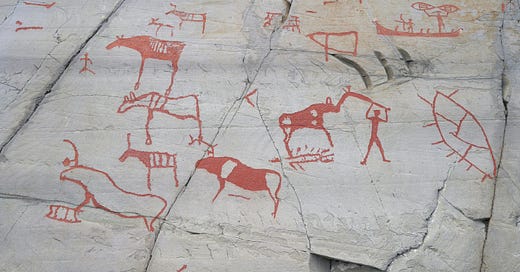The shift from a hunter-gatherer existence to an agrarian lifestyle stands as one of the most profound transformations in human history. Traditionally, scholars have attributed this Neolithic transition to external factors like climatic shifts or the allure of fertile lands. However, recent research challenges this narrative, emphasizing the pivotal role of human interactions and demographic dynamics in this monumental change.
Human Dynamics Over Environmental Determinism
A study published in Proceedings of the National Academy of Sciences1 introduces a fresh perspective on the Neolithic transition. Researchers from institutions including the University of Bath and the Max Planck Institute for Evolutionary Anthropology have developed a mathematical model that underscores the significance of human demographic interactions over environmental factors. This model suggests that the interplay between migrating early farmers and indigenous hunter-gatherers—characterized by competition, cooperation, and cultural exchange—was instrumental in the spread of agricultural practices.
Modeling Interactions: Insights from Predator-Prey Dynamics
Drawing inspiration from ecological models that describe predator-prey relationships, the researchers examined how early farmers and hunter-gatherers might have influenced each other's population dynamics. Their findings indicate that the expansion of farming communities was not merely a passive diffusion but involved active migration and interaction with local populations. These interactions led to varying population growth and mortality rates, ultimately shaping the demographic landscape of the regions undergoing this transition.
Dr. Javier Rivas from the University of Bath remarks,
"Our study provides a new perspective on prehistoric societies. By statistically fitting our theoretical predator-prey model to observed population dynamics inferred from radiocarbon dates, we explored how population growth shaped history and uncovered interesting patterns—such as how the spread of farming, whether by land or sea, influenced interactions between different groups. More importantly, our model also highlights the role of migration and cultural mixing in the rise of farming."
Genetic Evidence of Farmer and Hunter-Gatherer Interactions
Complementary genetic studies further illuminate the complexity of these interactions. Research indicates that early European farmers did not entirely displace local hunter-gatherers. Instead, there was a prolonged period of coexistence and genetic admixture. For instance, a study focusing on prehistoric individuals from France and Germany revealed significant levels of hunter-gatherer ancestry in early farming communities, suggesting continuous contact and integration between these groups over centuries.
Population Growth: The Agricultural Catalyst
The advent of agriculture undeniably spurred significant demographic changes. Genetic analyses have shown that regions adopting farming experienced rapid population expansions. In Europe, Southeast Asia, and sub-Saharan Africa, the timing of these demographic booms aligns closely with the origins of agriculture, underscoring the transformative impact of farming on human societies.
Conclusion
These insights compel us to reconsider the narrative of the Neolithic transition. Rather than being a passive response to environmental opportunities, the shift to agriculture appears to be deeply rooted in human agency, characterized by migration, interaction, and cultural exchange. Understanding these dynamics not only enriches our comprehension of human history but also highlights the intricate web of relationships that have shaped our collective past.
Further Reading
For those interested in delving deeper into this topic, consider the following studies:
Lipson, M., Szécsényi-Nagy, A., Mallick, S., et al. (2017). Parallel palaeogenomic transects reveal complex genetic history of early European farmers. Nature.
Rivollat, M., Jeong, C., Schiffels, S., et al. (2020). Ancient genome-wide DNA from France highlights the complexity of interactions between Mesolithic hunter-gatherers and Neolithic farmers. Science Advances, 6(22), eaaz5344.
Gignoux, C. R., Henn, B. M., & Mountain, J. L. (2011). Rapid, global demographic expansions after the origins of agriculture. Proceedings of the National Academy of Sciences, 108(15), 6044–6049.
These works provide comprehensive insights into the genetic and demographic shifts accompanying the dawn of agriculture.
A. Cortell-Nicolau, J. Rivas, E.R. Crema, S. Shennan, O. García-Puchol, J. Kolář, R. Staniuk, & A. Timpson, Demographic interactions between the last hunter-gatherers and the first farmers, Proc. Natl. Acad. Sci. U.S.A. 122 (14) e2416221122, https://doi.org/10.1073/pnas.2416221122 (2025).











Share this post